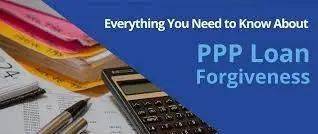Understanding Loan Forgiveness: How to Qualify and Maximize Your Benefits
#### What is Loan Forgiveness?Loan forgiveness refers to the cancellation of a borrower's obligation to repay some or all of their student loans. This progr……
#### What is Loan Forgiveness?
Loan forgiveness refers to the cancellation of a borrower's obligation to repay some or all of their student loans. This program is particularly beneficial for individuals who have made a significant commitment to public service or who have faced financial hardship. The goal of loan forgiveness is to alleviate the burden of student debt, making education more accessible and allowing borrowers to pursue careers that may not be financially lucrative but are essential to society.
#### Types of Loan Forgiveness Programs
There are several types of loan forgiveness programs available, each with its own eligibility criteria and application processes. Here are some of the most common:
1. **Public Service Loan Forgiveness (PSLF)**: This program is designed for borrowers who work in public service jobs. To qualify, you must make 120 qualifying payments while working full-time for a qualifying employer, such as government organizations or non-profit entities.
2. **Teacher Loan Forgiveness**: Teachers who work in low-income schools or educational service agencies may qualify for forgiveness on a portion of their loans. The amount forgiven can vary based on the subject taught and the length of service.
3. **Income-Driven Repayment (IDR) Forgiveness**: Borrowers enrolled in an income-driven repayment plan may have their remaining loan balance forgiven after making payments for 20 to 25 years, depending on the specific plan.

4. **Perkins Loan Cancellation**: Certain professions, such as teachers, nurses, and law enforcement officers, may qualify for cancellation of their Perkins Loans after completing a specified period of service.
#### How to Qualify for Loan Forgiveness
Qualifying for loan forgiveness can be a complex process, but understanding the requirements can help streamline your path to relief. Here are some key steps to take:
- **Research Programs**: Start by researching which loan forgiveness programs you may qualify for based on your profession and employment status.
- **Maintain Accurate Records**: Keep thorough documentation of your employment, payments, and any communications with your loan servicer. This will be essential when applying for forgiveness.

- **Stay Informed**: Loan forgiveness policies can change, so it's important to stay updated on any new regulations or programs that may become available.
- **Apply on Time**: Be mindful of deadlines for applications and renewals. Missing a deadline could result in losing your chance for forgiveness.
#### Maximizing Your Loan Forgiveness Benefits
To make the most of loan forgiveness opportunities, consider the following tips:
- **Choose the Right Repayment Plan**: Selecting an income-driven repayment plan can be beneficial if you anticipate qualifying for forgiveness after a certain period. This could lower your monthly payments and help you manage your finances better.

- **Keep Your Employer Informed**: If you work for a qualifying employer, ensure that they are aware of your intent to apply for loan forgiveness. They may need to complete certain forms or verify your employment status.
- **Utilize Resources**: Take advantage of resources available through your loan servicer, financial aid office, or non-profit organizations that specialize in student loan guidance. They can provide valuable assistance throughout the process.
#### Conclusion
Loan forgiveness can be a powerful tool for alleviating the burden of student debt, especially for those committed to public service or who have faced financial challenges. By understanding the various programs available, knowing how to qualify, and taking proactive steps to maximize your benefits, you can navigate the loan forgiveness landscape more effectively. Remember, staying informed and organized is key to successfully achieving loan forgiveness and securing a brighter financial future.